
Written By: Dylan Siemens | Videos By: Victor Pagán
Whenever we teach cupping classes, we like to mention common physiological and psychological sensory errors. For example, someone who knows they’re about to taste a natural process coffee will tend to describe it as fruitier than someone who isn’t privy to that information. This is referred to as “expectation error.” Bias is part of the human experience. What we believe shapes how we view and interact with the world.
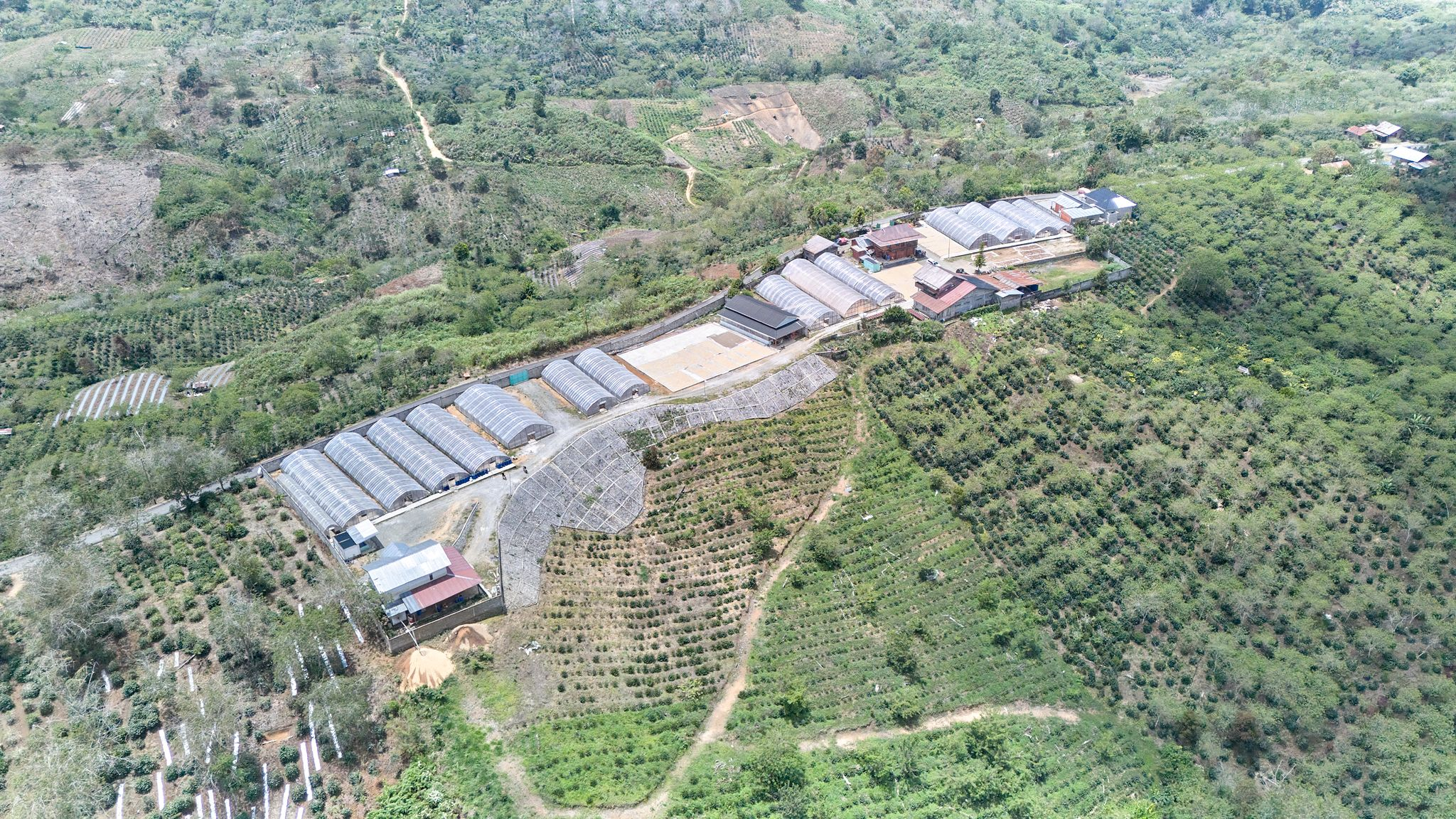
Asman Gayo Mill, Pantan Musara Village, Pegasing District,
Central Aceh, Sumatra
For most of my coffee career, I’ve classified Indonesian coffee as earthy, spicy, and heavy. If I’m honest, that generalization led me to avoid choosing those coffees from café menus. Depending on our preferences and what we first learned about Indonesian coffee, some might give these offerings less of a shot on their cupping tables. In today’s coffee landscape, though, it’s time to shift old expectations about Indonesia and rediscover what an entire coffee-growing area has to offer. We are incredibly excited about all that Piero is bringing to the table for us to cup, and we welcome you to grab a spoon and join us.
Piero Cristiani, Senior Green Buyer, has essentially lived in Indonesia for half of the year over the past few harvests. He’s in Sumatra for its October-to-December harvest, then hops between Java, Bali, Sulawesi, Timor-Leste, and Flores during their June-to-August harvest.
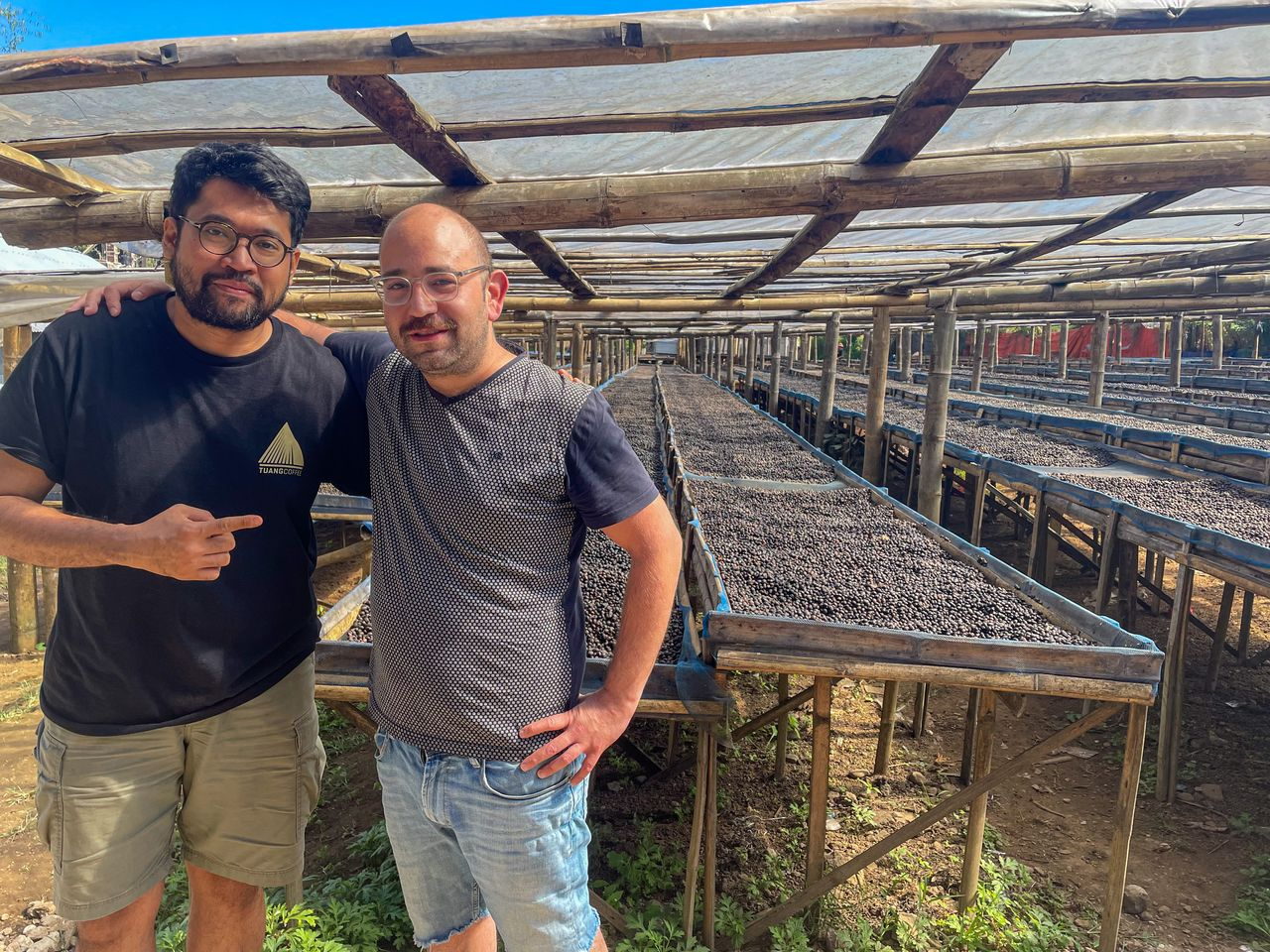
Piero visiting Tuang Coffee, processors in Manggarai, Flores
Around 2015, Piero began focusing on sourcing washed and natural-processed coffees as specialty processors started deviating from Indonesia’s traditional wet-hull processing method, where coffee is hulled from its parchment a day or two after depulping and before the seed is fully dried, rather than after (here’s a great video on wet-hulling). Many people love the distinctively earthy profile of wet-hulled coffee. Others, as we mentioned at the top, tend to think that’s all Indonesian coffee has to offer.
Long-term exploration, paired with foundational relationships, has revealed the breadth of coffee experiences cultivated across the world’s fourth-largest coffee-growing country. With new processors and mills becoming more interconnected with producing communities, Indonesian coffee has changed significantly in the past decade. Piero, who also works extensively in Central and South America, describes Indonesia as “the next frontier.”
Here’s Piero, detailing the past year’s sourcing work:
Here’s a snapshot of the six islands, their producing regions, and the types of offerings in Piero’s focus. Note that not all offering are available to all offices. Click through to see what’s currently available in your region.
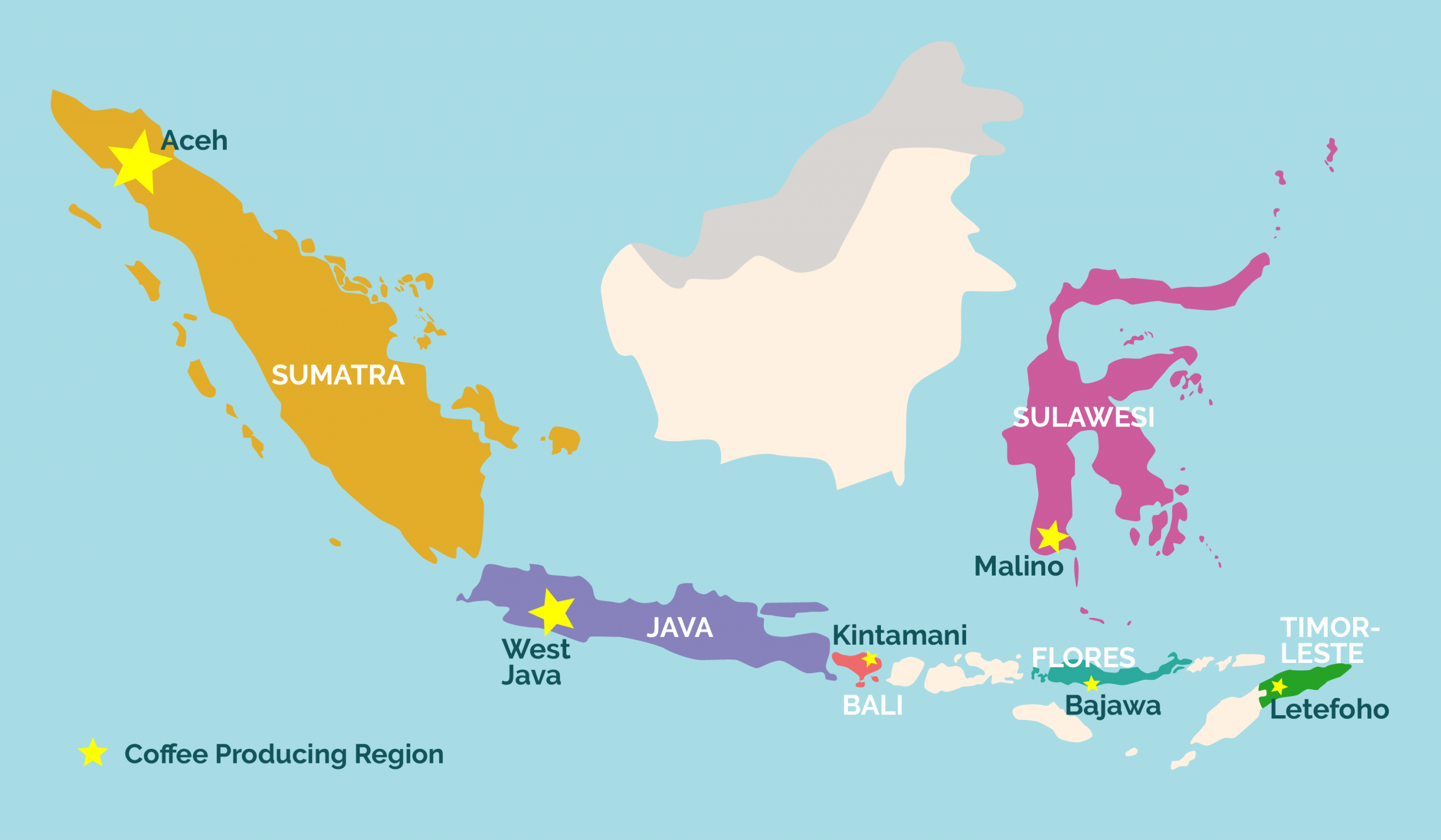
Sumatra
We’ve long worked with Asman Arianto, operator of the Asman Gayo mill, which services 400 producers and has produced multiple COE finalist lots. Piero has also sourced exciting FTO wet-hulled and washed options from cooperatives in the Aceh region.
Java
Frinsa Estate, situated in the Badung highlands of West Java, has partnered with smallholders to enhance coffee production quality and sustainability in the area for many years. They’re constantly adding to their processing catalogue and are a source for phenomenal Microlots and Sunda Badak offerings.
Bali
Coffee production in Bali is relatively small, both in hectares cultivated and amount exported. However, we’ve been impressed with the process-focused Karana community of 377 smallholders, who take great pride in their culture, farming practices, and innovation in coffee production from the Kintamani region.
Sulawesi
Sulawesi’s potential is as high as its elevation in the Gowa Regency in the southern part of the island. Yolan Tirta, third-generation grower, is establishing mini-mills and drying stations throughout the region, laying the foundation for an exciting future of coffee from local farmers. Our U.S. office will receive one lot this year—look for more in the upcoming harvest.
Flores
Sourcing in Flores has been inconsistent over the past five years, but Piero is excited to visit some small, quality-focused processors during the upcoming harvest. Like E. Timor, specialty coffee production is increasing, and this is another area of interest for us.
Timor-Leste
The Letefoho region of East Timor reaches as high as 1,900 MASL, and due to Portuguese occupation (rather than Dutch, like the rest of Indonesia), different varieties are grown here. We’re hopeful for some washed and natural Microlots soon.
Coming Soon
Coming Soon
Enjoy this interview with Asman and learn more about his mill’s operations, recorded in the middle of the 2024-25 harvest.
Sumatra’s harvest is usually peaking now (at the time of writing), from October to December, so Piero was just there with long-time connection Asman. It’s a difficult harvest this year. Traveling around the Aceh region, coffee trees should be laden with ripe cherries, but most are still completely green. It’s going to be the lightest harvest in 15 years, so the market is highly competitive. An outside buying group is inflating prices while local buyers compete for any available volume. Fortunately, we have a relationship with Asman, the producer and processor of some of the most exciting coffees we cup every winter. He’s developing as many microlots as possible this harvest, and we’ll be back, along with the rains, for the March-April fly crop.
Outside of Sumatra, we’re excited to expand our offerings, including all the regions we’ve discussed. From microlots to FTO, women-produced, or community lots, nearly every project type we’ve conducted in C. + S. America is being developed in Indonesia with exciting results.
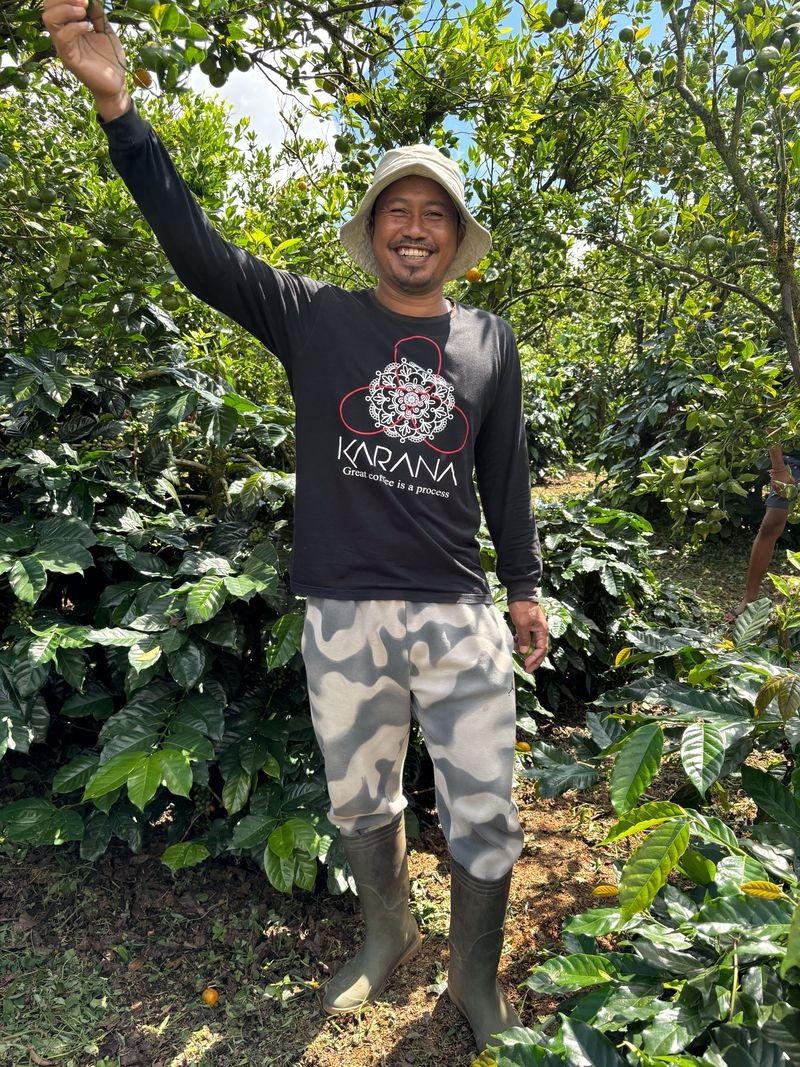
Karana coffee processors, Kintamani, Bali
Indonesia’s coffee history dates to the Dutch East Indies Trading Co.’s colonization of the islands in the 1600s. The Dutch established coffee plantations, forced the indigenous population to become laborers, many of whom experienced poverty, starvation, and destitution for the next hundred years. Then, in the 1870s to 80s, a sweeping Coffee Leaf Rust epidemic nearly wiped out the entire coffee industry of Indonesia. To rebuild, colonists introduced Robusta plants in the early 1900s and finally surpassed the production numbers of the 19th century 20 years later. Economic and wartime hardships marked the following 1930s and 1940s. Under Japanese occupation during WWII, the coffee export industry nearly collapsed again, and citizens of Indonesia suffered greatly.
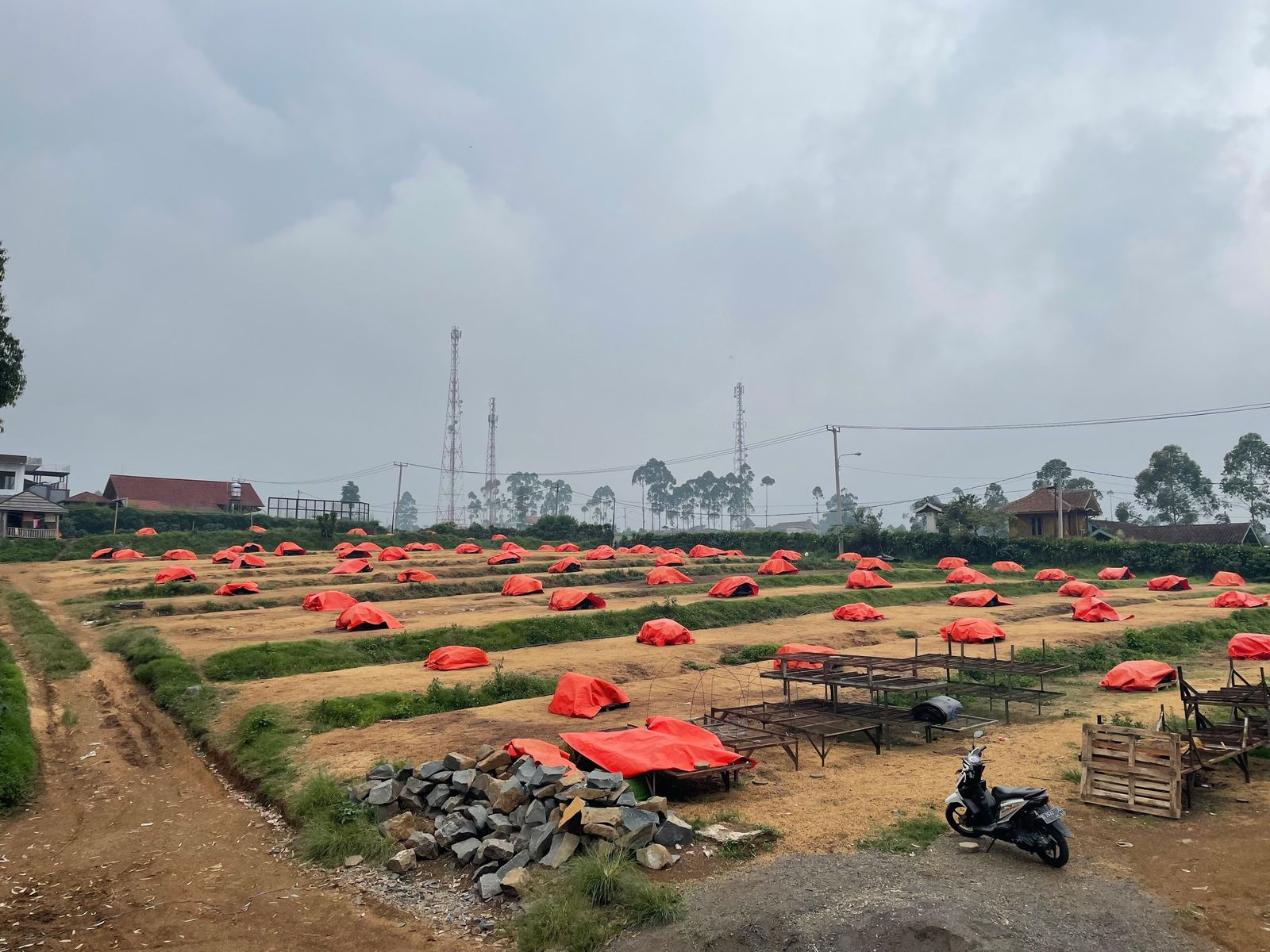
Protected coffee on the drying beds at Frinsa Dry Mill, Java
After World War II, Indonesia finally gained independence and worked toward political stability in the 1950s. The once Dutch-owned plantations were nationalized, while some were subdivided for smallholders. Smallholders acquired agricultural land at a rate of 8% per year from 1970 onwards. The government prioritized coffee by developing infrastructure, establishing cooperatives, and implementing policies that supported smallholder production. This decentralized, smallholder framework has proven far more resilient and socially healthy than the extractive, colonial plantation system.
Today, 92% of Indonesia’s coffee is produced by an estimated two million farming families across the islands. Robusta production still accounts for around 90% of Indonesia’s coffee economy, but Arabica production is on the rise as specialty coffee, café culture, and improved processing techniques spread globally. Indonesia’s history and maritime climate lead many to assume all its coffees are wet-hulled, earthy blenders—the same expectation error we discussed at the top. But that generalization blinds us to what’s actually happening. The very history and climate that shaped the traditional Indonesian profile are now producing coffees that challenge it. We’re fortunate to work with producers, processors, and mills that are pushing these boundaries, helping us set aside old biases and experience what Indonesian coffee is becoming.
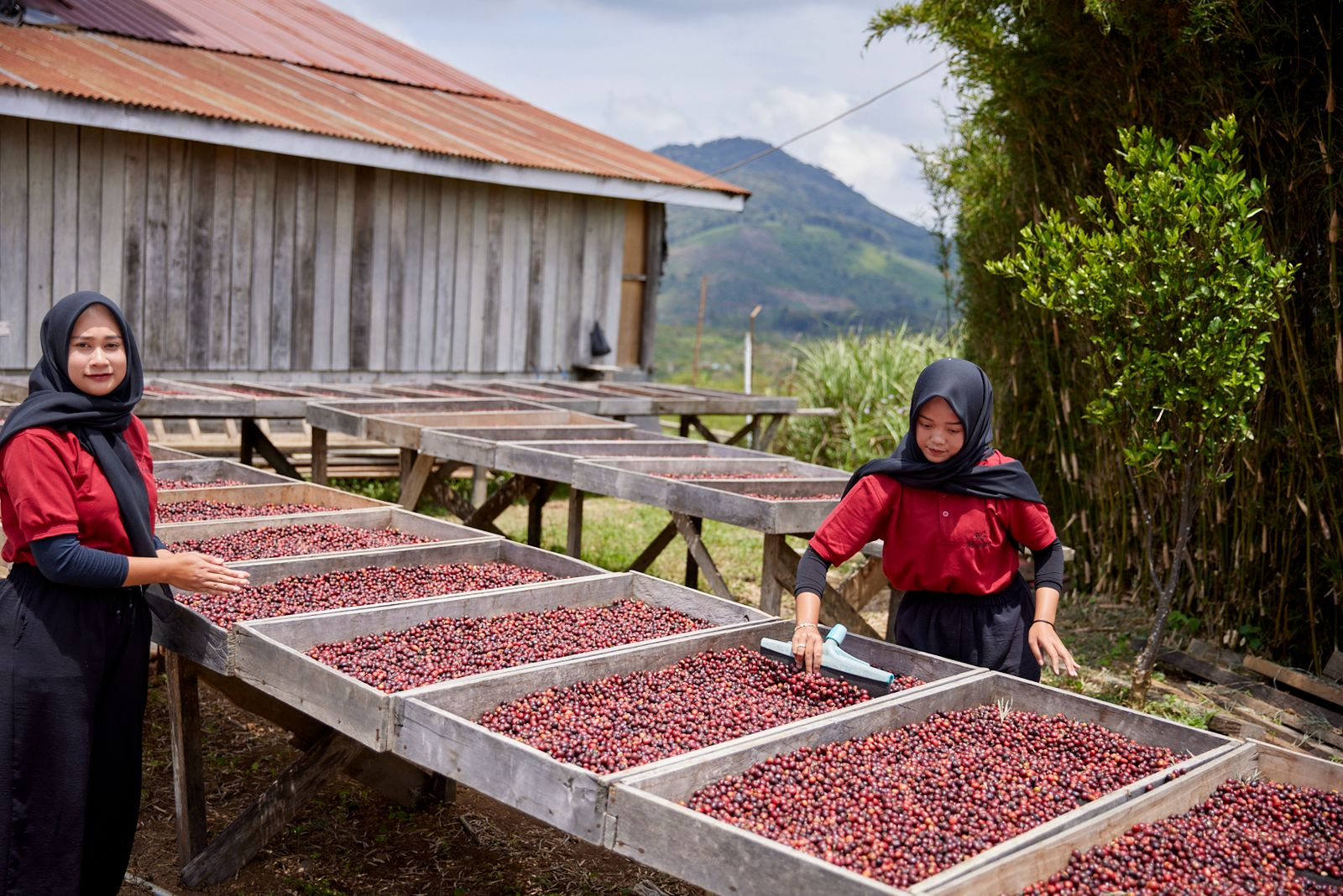
Natural process at the Asman Gayo Mill